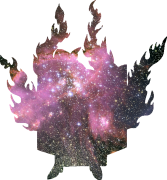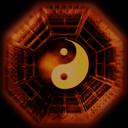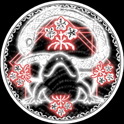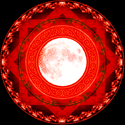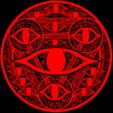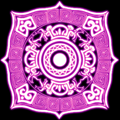The Way Home and the Soul in Touhou
I recently read Shinto: The Way Home by Thomas P. Kasulis, and I was highly impressed by it. This is partly a review of the book, but also partly a reflection and elaboration on something that sits at the front page of this website: Touhou is "souled" in a literal sense. To be honest, that phrase was something that I did not very hard intellectually toil upon, so this an opportunity to reflect deeper on it. Kasulis’ book and has analysis Shinto terminology offer good tools for it.
So who is this Thomas P. Kasulis who wrote The Way Home? He is professor emeritus of The Ohio State University. Besides Shinto: The Way Home, he has written books such as Zen Action/Zen Person and Engaging Japanese Philosophy: A Short History. Kasulis comes from an academic background, and Shinto: The Way Home is an academic text, essentially a book on Shinto philosophy. This might make it somewhat dry or hard to approach for some, but I found that his background in philosophy brought an interesting analytic perspective to the book.
Contrary what some would expect however, this book takes the reality of spiritual experience on some form or manner as a starting point. The name of the book comes from a class of experiences that visitors to Japan – Kasulis himself included – have reported: ”feeling Shinto” and ”feeling strangely at home” in Shinto settings such as shrines. From this starting point, Kasulis begins studying this mystery of ”feeling strangely at home”.
Mystery is a key word in this book. Kasulis writes how Western philosophy has devoted itself to unraveling mysteries, but Shinto has devoted itself to accepting the mystery. Kasulis respects this attitude and approach. He uses the tools of philosophy to elaborate upon key Shinto concepts and seeks to understand why even those who are not Japanese can ”feel strangely at home” in Shinto settings – and why it’s possible to ”feel Shinto” outside of Japan. Kasulis identifies that there is an universal existential element of Shinto, but also a particularly Japanese essentialist element of Shinto. Both of these elements of Shinto have influenced the historical development of Shinto as a religion. After completing an analysis of some key concepts for understanding Shinto, he outlines a history of Shinto, as influenced by the existentialist and essentialist elements of it.
Tama, Mi, Mono, Kami
Kasulis begins his analysis with some core concepts of Shinto. There are several words in Shinto for what in West could be called spiritual power: tama, mi and mono. Tama is a type of spiritual power that infuses the material world, while maintaining both the integrity of itself and physical matter. This makes tama somewhat similar to Western ideas of ”soul” or ”spirit”. Kasulis uses an analogy of beach sand suspended in seawater to describe tama. Here tama is the seawater, and matter the sand: the sand might be completely immersed in the seawater, yet does not dissolve in it.
Mi and mono refer to a type of spiritual power that is intertwined with materiality. Matter does not exist without mi or mono, and mi and mono do not exist without matter. Kasulis uses an analogy of seawater again here, but this time it is of water and salt. Salt dissolves into seawater, and seawater is salty everywhere. Mi and mono are easy to overlook, and Shinto praxis aims to sensitize the practitioner to this spiritual aspect of reality.
Sometimes however, the mi becomes something that starts to move on it’s on and call attention to itself, becoming more tama-like, developing an integirty of it’s own. It moves within the physical world but does not fully disappear into it, developing into an individual ”soul” or ”spirit”. These are called mitama or tamashii in Japanese. They can refer both to individual souls or something collective. Kasulis uses ”yamato damashii”, ”the japanese soul” as an example of collective tamashii.
Mono can have a meaning of it’s own. It can refer to a ”changeling spiritual quality” that ”moves among” the forms of ghosts, monsters, animals and humans. Much like mi, mono too can become particularized enough to resemble tama. This kind of mono is particularly manifest in cases of spirit possessions.
The Japanese use tama, mi and mono in ways where they blur together, and it’s possible to view them as modes of being rather than sharply delineated categories of their own. These modes of being are manifest in how things are related. Tama is spiritual power in reference to external relations, while mi and mono are spiritual power in reference to internal relations.
A mundane example of external relations would be a bridge over a river connecting two roads. Remove the bridge, and the connection becomes severed, yet the two roads and the river would continue to exist. Internal relations are such that severing them changes the nature of the related things. Kasulis uses an example of jazz improvisation, but I think the human body and it’s organs is even more illustrative. The organs cannot survive the body, and the body cannot survive without the organs.
Just as these two categories are a bit blurry (the body can survive losing some non-critical organ, a bridge being removed would have quite large 2nd order impacts on local traffic and economy), the mi, tama and mono are blurry. However, it is important to understand that in Shinto, the material is always tied with the spiritual. This tie can be internal, external or both, and it can change. Kasulis uses, fascinatingly enough, an analogue of magnetic field for describing this effect. Matter does not really become ”spiritually charged”, but things change how it is spiritually charge. Rather than ”energizing”, contact with tama changes ”polarity”. It’s not a change of quantity (matter is or is not spiritually charge) but quality.
What about kami, then? Kasulis writes that kami is simply the name for the presence itself of this spiritual power that goes under the names of tama, mi and mono. This presence is felt as a sense of awe, and it can come from myriad of sources. A common one – whch Kasulis also gives personal examples of – are breathtaking scenes of nature. This presence can also be an uncomfortable type of awe, like an unpleasant presence lingering in a historical murder site, or an eerie graveyard at night. This presence can be felt in natural or manmade environments or things, but also in people or events. In Shinto view, the world is saturated with kami, yet most would likely say that they don’t feel like they live in such a world. The reason for that is related to next key concepts: holographic entry points and kokoro.
Holographic entry points and mirrors of the kokoro
”Holographic entry point” sounds like a term out of science fiction, but it actually comes from systems theory. There is a subset of complex internally related systems that are known as holographic systems. Within these systems, not only are the internal parts intimately linked, each part in some way or other reflects the whole. An example of this could be a hair from the body of a human. At first sight it seems like it hardly reflects the whole human being, but it’s possible to sequence a person’s DNA from a single hair. Therefore, a hair can be a holographic entry point to the biology of a particular human.
What does this have to do with Shinto? Kasulis presents that the Shinto worldview is essentially holographic. Since in the Shinto view we live in a tama-filled, kami-saturated world, all of existence then reflects the kind of wondrous qualities presented by the kami. Since all of reality is filled with kami, it is possible to perceive the kami-filled world in it’s wondrous totality everywhere. However, there are places, objects, even people who can act as kind of ”vantage points” or perhaps boundaries to be crossed, which will allow one to perceive the wondrous spiritual qualities of the kami-filled world with greater ease.
Shimenawa and torii gates are examples of these holographic entry points. Shimenawa designates an object as being inhabited by kami, and also serves the function to call visible attention to the particular object in question. Torii gates serve as liminal spaces, and crossing one will ideally allow one to enter a place – or a state – where it is possible to perceive the kami-filled wondrous world in it’s totality.
It’s this ”holographic” quality of the kami-filled world that according to Kasulis is responsible for the quality of ”feeling strangely at home”, as it provides a sense of intimacy with the world. As humanity is part of the kami-filled sacred world, a part of humanity and individual humans is also filled with kami and attached to the sacred.
However, the burdens and concerns of everyday life can cause one to lose this connection to the holographic kami-filled world, making it difficult to ”find the way home”. Torii gates and other holographic entry points functions as a way to restore the human being to a kind of a baseline, but this baseline can become some clouded and befudled that one still cannot perceive the kami-filled world even after crossing it.
Therefore, Shinto has praxis devoted to restoring one to a state that is more receptive to the kami-filled world. This is related to the Japanese idea of kokoro, which literally translates to ”heart”, but in practice means something like ”heart and mind”. There isn’t a convenient single Western analogous term, as Western history has tended to separate mind and heart, body and soul. Kokoro is not only embodied within humans, but also within the world itself. Kasulis describes kokoro as something that exists akin to a field between a person and the world, the human and the world being ”distinguishable only as the poles between which the kokoro resonates”.
To be truly receptive to the kami-filled world, one’s kokoro must become makoto. Makoto means ”true”, ”genuine” or ”sincere”. This state of makoto no kokoro is often shorted to magokoro. Mirrors are sacred objects in Shinto, and there are a lot of metaphors related to mirrors when it comes to describing the state of kokoro. When the kokoro become makoto, the human will realize they too are part of kami, they will reflect kami, not just reflect on kami. Conversely, a state of disconnection or distortion from the kami-filled world is often described as being like a mirror covered in dust that does not reflect the world properly. The aim of various purification practices in Shinto is to restore kokoro into magokoro, in other words, to return the individual human to state that is receptive to the world.
As kokoro is embodied within the world, it’s not just humans that have a kokoro. As the various things that make up the kami-filled world are interconnected and responsive to each other, there exists a kokoro of things, mono no kokoro. The human kokoro is set apart from mono no kokoro by having intentionality, which it can also use to dim and distort itself. It’s also considered that words, in particular the Japanese language, have a kind of kokoro of their own. This is also called kotodama, or the tama of words.
Because humans, the world and language are all part of the kami-filled reality and have kokoro, it’s possible to to use language to create connections between various parts of reality. Acts of creation are seen as acts of co-creation. If one were to write a poem about a landscape with genuine responsiveness, it would be the interactions between the kokoro of the poet, the landscape and the words that would create it.
Existentialist and essentialist Shinto in history
So, to put it shortly, there is an existentialist element in Shinto that is universally applicable even outside of Japan. Kasulis however identifies another dimension to Shinto: an essentialist one. This is the side of Shinto that is essentially a Japanese indigenous or ethnic religion, tied up with the Japanese nationalistic and imperialistic projects, strongly focused on self-identity as part of a Japanese national community built around the imperial family.
Both of these dimensions have existed since Shinto had to define itself against Chinese influences, but which has been the more dominant dimension has changed over time. The introduction of Chinese influences forced the native faith to find means to define itself as a separate thing of it’s own, giving birth to essentialist interpretations of Shinto. Something like existentialist Shinto had existed – unnamed, unthought – ever since Japan became settled by humans and people began to give names to the spiritual aspects of reality they experienced.
Earliest forms of essentialist Shinto served as a way both to define Shinto as a thing of it’s own, but also to legitimize the imperial rule and lineage. Shinto offered the nation a foundational story. The creation of Nihon Shoki and Kojiki were crucial for these efforts.
Nihon Shoki focuses more on the imperial lineage and the emperors and was modeled after Chinese court histories. It was written in Chinese and aimed at establishing Japan as a political entity recognized by audiences capable of reading Chinese – that is, basicaly everyone who was an educated East Asian at the time.
Kojiki focuses more on the ancient mythological times and the creation myth. It was written in an early attempt at creating a written Japanese language. In fact, it used three separate attempts at such a system, creating a text almost incomprehensible by latter generations. Compiled by the court historian-storyteller Hieda no Are, Kojiki was squarely aimed at the Japanese itself, offering the nation it’s foundation against Chinese influences of Buddhism and Daoism.
Buddhism would become the dominant religion for a long while, but it would never quite wholly absorb Shinto. In particular the back-then dominant strains of Buddhism, Tendai and Shingon, skillfully used syncretism to justify their presence in Japan, while helping preserve Shinto. In particular Shingon’s identification of Dainichi Nyorai with Amaterasu Oomikami, who was thought to be the mother of the imperial lineage, utilized essentialist Shinto tendencies to further Shingon influence.
There were always however Japanese who were not satisfied with the dominance of Buddhism, and eventually the waning of Buddhist and Chinese influence allowed space for Shinto renaissance through the Native Studies movement. A central figure in this movement was Motoori Norinaga, whose efforts and views deserve a closer look.
Motoori was conceived after his parents had prayed to the kami for children, and Motoori considered that he owe his very existence to the kami. This drove him to a scholarly feat that took thirty years to complete: the translation of Kojiki.
You might ask yourself, how on Earth did a Japanese work like Kojiki need to be translated into Japanese, but here you must remember the fact it was written in crude, confused early attempts at written Japanese. Over centuries Kojiki had been copied over and over again, but as the writing systems evolved, people eventually lost the ability to understand the text. Motoori did not see this as a negative, as he thought that this had preserved the untampered meaning of the text, free from Chinese, Buddhist, Daoist and Confucian influences.
Kojiki was the holiest of holy texts to Motoori, and he saw reading and translating it as taking part in the act of the creation of the world itself. It’s from Motoori that idea of kotodama, the soul of the words, comes from, and it is him who defined the idea that poetry is an act of creation between the environment, the poet and the words.
Motoori was a fervent true believer, a fundamentalist textual literalist and a crucial figure in the history of Shinto – both existentialist and essentialist – and some could even see him as an early nationalist of sorts. However, to him Shinto was something very different compared to some later thinkers. Motoori was critical of the samurai virtues of his era. Since death is a taboo in Shinto, he saw the idea of ”to be a samurai is to die” as a defilement of life. It was not submission or duty to the imperial lineage – as sacred as he saw the lineage to be - that was at the heart of Shinto as he saw, but the magokoro that could experience the kami-filled wondrous world.
Motoori saw certain archetypally feminine qualities such as intuition, openness and sensitivity as being more in-tune with Shinto. His ideal was the Heian court life that had produced works like the Tale of Genji, which Motoori saw as being the ideal combination of aesthetic and spiritual.
The Native Studies movement that Motoori spearheaded later became the justification was Japanese nationalism and imperialism. Such however required discarding or distorting certain views that Motoori had that were not exactly in-tune with such projects. Atsutane Hirata was a crucial figure in the development of Shinto nationalism. Atsutane shaped an interpretation of Native Studies that was more populist, activist, actively xenophobic and racially centered, paving way for interpretations of Shinto as an ethnic religion unique to Japanese. The peak of this interpretation was reached by the Second World War, where Japan was driven forth by it’s vision as a uniquely divine nation led by an incarnate deity.
The Immaterial and Missing Musubi
Kasulis’ book is well crafted, and his analytical view of Shinto is appreciated. However, it is good to keep in mind, that within Shinto – being a religion lacking strong central doctrine – there are divergent interpretations of what tama, mi and mono are. I think Kasulis’ captures something very important about Shinto worldview, but the language to capture that worldview might be quite nebulous. Some would not define tama, mi or mono as he does, but still recognize what he is trying to convey.
There’s also some Shinto concepts that Kasulis excludes from his analysis. I can see why he excluded them. This is after all a work of academic philosophy, and a certain clarity of argument and concepts is sought there. His core argument is essentially that there is an existential and essentialist side to Shinto, the existential side can be felt by anyone, the essentialist side can be in very stark contrast with the existentialist one, and there exists an unresolved tension between these two. The existentialist angle requires some explanation since it is not so readily felt by the target audience of Western academic philosophy (even if it’s coming from the Asian Studies department).
I would have still liked to see what Kasulis would think of certain Shinto concepts he chose to exclude here. Rei and kon and the ichirei shikon, one spirit four souls are ideas that could perhaps simply be seen as elaborations of tama, mi and mono. Rei could be a particular manifestation of individualized tama, as in human spirit or ghost, and the shikon could simply be component aspects of an individualized tama.
However there is a Shinto concept that Kasulis does not analyze that I believe it could have been very relevant to his analysis of both existentialist and essentialist Shinto. This is the musubi. Musubi can mean union, connection, tie, knot or even a rice ball in mundane sense. However, in Shinto, musubi is seen to be a creative power that exists in a vertical and horizontal way.
Vertical musubi is essentially a connection to the source of all creation, however that might ultimately be conceived as. There are several different kami associated with the act of creation, and some forms of Shinto theology see all kami as ultimately being expressions or parts of a single kami. This vertical musubi is thought to bring humans in relation with the kami. It’s said that kokoro allows humans to perceive or feel the vertical musubi.
Horizontal musubi are connections between things in the world of materiality, humans included. These connections that facilitate the act of life and creation are not less important than the vertical connection to the kami, and the world cannot exist without both. Sometimes the relationship between these two musubi has been compared to a tapestry, where vertical musubi gives the constant and continuing frame, and horizontal musubi gives the design that reflects the era and circumstances of it’s creation.
One can easily see that musubi could be interpreted very differently if you wish to look at them in an existentialist versus essentialist manner. An existentialist viewpoint would emphasize that musubi can be a universal experience that simply manifests differently in different cultures and times. An essentialist viewpoint would argue that there is some special or exclusive importance to the vertical and horizontal musubi of Japanese society, or at the very least posit an interpretation of them as part of the country’s social life.
The Way Home and The Soul in Touhou
So, looking at all of this, let’s aproach that soul in Touhou in a systematic way.
Firstly, Touhou is of course part of this kami-filled, tama-saturated reality, so by some definition it is as ”souled” as anything in the world is, at least in the sense it has mi. A potential counterpoint could be that virtual objects don’t have mi, or that they belong to some kind of other category. It is an interesting potential counterpoint, but what exactly that ”other thing” would be is pretty hard to say.
Moving beyond more trivial matters, the real question is that does Touhou have some kind of an individuated tama, or does it somehow ”house” several individuated tama? Or does the sense of ”souledness” arise from some other mechanism, such as some kind of resonance of kokoro, or Touhou acting as a kind of ”holographic entry point”?
For Touhou to have an individuated tama in itself, it would require that one could perceive Touhou to be an individuated thing of it’s own with spiritual potency. While this could be dismissed offhand by the fact that no-one has so far reported contact with Touhou itself, this also poses the question of what exactly that kind of contact would be? If we take the existence of collective tama seriously, then the world is filled with all kinds of individuated, but massive, abstract tama that would be hard to perceive.
To perceive a collective individuated tama, something like that ”yamato damashii”, or ”the spirit of freedom” or whatever collective spirit you prefer would require a kind of proxy, icon or ”holographic entry point”. You could argue that something like Hakurei Reimu or any number of popular characters unique to Touhou could be that icon, that holographic entry point that opens us up to the collective individuated tama of Touhou.
If Touhou would have an individuated, albeit probably rather abstract, tama of it’s own, could it then be a kami? If we go by the terminology that kami is the name for the sensed presence of a certain kind of individuated tama that is felt as a sense of awesome mystery...I think you could make an argument that Touhou could be a kami in itself. I most certainly have felt awe with these games, though often in the context of danmaku duels with entities that are based on historically kami… So I consider this an open question at this point.
What of mono, that ”changeling quality”, associated with ghosts, youkai, animals and the like? Well, the fictional world of Gensokyo is full of such things, and I very strongly feel like Touhou carries their ”trace” too. Mono and tama are likely not considered exclusive, and historically youkai were essentially kami that were so scorned that normal means of appeasement no longer worked.
It’s this presence of multiple entities, multiple mythologies, narratives open to interpretation, different influences from East and West, meshing and clashing that does complicate but necessarily invalidate the idea that Touhou possesses a kind of individuated, clearly defined tama. So let’s look at this ”souledness” in terms of musubi, kokoro and the idea of holographic entry points.
Touhou arguably possesses both vertical and horizontal musubi, both in a trivial sense that all reality is composed of those, but also in a more intentional sense. By basing much of the work on re-interpretation of ancient mythologies, ZUN has done an act of vertical musubi. Perhaps religious traditionalists would disagree with these interpretations, but their presence establishes a link to mythologies which would unambiguously considered vertical musubi. And by creating this link, it creates a possibility for others to experience the vertical musubi.
Touhou is also an act of horizontal musubi, as the reinterpretation and re-presentation of old mythologies has renewed them in a way that presents the era and circumstances of their creation. It should also be noted that Touhou has amassed a very notable social scene around it. One could argue that the acts of co-creation that power the Touhou doujin scene and therefore the broader fandom are a supreme act of horizontal musubi. It could very well be argue that it is this richness of Touhou’s musubi that gives it that feeling of being ”souled”.
Perhaps this ”strength” or ”density” of musubi can be considered part of the process where things associated with powerful tama become ”magnetized” and develop powerful tama of their own by association. By wielding a sword the legendary samurai gives rise to a legendary sword, filled with tama. So perhaps by association by invoking the names, history and depictions of countless deities, youkai and spirits, Touhou has become ”magnetized” by these associations.
Let’s also consider the kokoro. As a reminder, the kokoro is embodied both within the world and humanity. Humans have kokoro, but other things can have mono no kokoro. Therefore humanity and the world can be seen to be ”distinguishable only as the poles between which the kokoro resonates”. Kokoro can also be seen as having qualities: it can become clouded, or then it can be open perceptive. Presumably other kinds of qualities can exists within the kokoro too. So perhaps the kokoro of Touhou is a very particular one, and it can create very particular, strong resonance between it and those who become exposed to it.
Lastly, can Touhou act as a kind of holographic entry point? I would say so. Touhou is obsessed with gates, barriers, boundaries and crossing them, willing to set up as kind of interface point between itself and ”the outside world”, which in-game canon appears to be just our reality. Crossing the barrier and ”passing into fantasy” puts one into some kind of mythopoetical realm of everything forgotten by the world. Yet at the same time, a boundary that can be crossed exists, and the things that exist in Gensokyo still exists in some form in reality too. I don’t know how many people seriously believe in youkai, but they remain a beloved part of Japanese culture.
Remember that the effect of passing a holographic entry point depends on the one who passes. Ideally, passing a torii gate would allow one to enter a state where perceiving the kami-filled wondrous world is possible. Yet sadly numerous people have passed those gates with decidedly other end results. We’ve heard in recent years of tourists acting as a menace or people harassing shrine staff. A torii can be just a gate for those who refuse to purify and open up their kokoro. Likewise, Touhou can just be a shooter game or a collection of weird hentai doujins if that’s where one’s kokoro is.
The question then is, what happens if one passes the Hakurei Barrier with a kokoro that is tuned to accept the reality of the kami-filled woundrous reality? Would one then perceive something more than a creatively re-interpreted collection of mythologies? Could one tap into the vertical musubi and become sensitized to the kami-filled wondrous reality in it’s totality?
I would say so.
So, to sum things up:
Touhou is richly saturated with vertical and horizontal musubi. The thick mythological associations Touhou has that make up the musubi have ”magnetized” it’s inherent spiritual quality as part of spiritual reality. Where things get foggier is whether Touhou has an individuated tama of it’s own, or if it simply ”houses” or offers routes of access to other tama through it’s musubi. There are arguments to be made for both. The rich character of it’s musubi and the way it’s tama has been ”magnetized” have rendered into a holographic entry point – a virtual torii gate – that if passed with a properly attuned kokoro allows one to be more intimately part of the kami-filled wondrous reality.
Is it no wonder then that so many yearn to go to Gensokyo, feeling like they would be welcomed there, as if it was their home all along?
There’s some final considerations. When it comes to tuning the kokoro, traditional Shinto has it’s own repertoire of methods that Touhou does not. However, what Touhou has are the strange danmaku mandalas, the repeated effort and the catharsis of success. Perhaps these consist a kind of novel methods of harae and misogi, a way to straighten and set right one’s kokoro. There are shamanistic practices adjanced to Shinto that utilize methods of trance to channel the spirits, and playing the games can certainly a trance-like quality. The repeated effort, frustration and the catharsis of success are perhaps out of Shinto conceptual universe. Yet the Japanese have engaged into strenuous, meticulous, precise efforts in spiritual pursuits, be they long pilgrimages, climbing holy mountains, the asceticism and pepper smoke of Shugendo or efforts put into feats of creativity. Perhaps finally getting that 1CC can be something of a strenuous journey. I have certainly felt extremely cathartic after pulling off such a feat and have experienced strange things in the aftermath.
A last thing of some note is that Hieda no Are and Motoori Norinaga share their surnames with the characters Hieda no Akyuu and Motoori Kosuzu from Touhou. Analysis of these characters in light of their historical near-namesakes could be a worthwhile article of it’s own, and I won’t delve too deeply into it here. Yet in Touhou there is a remarkable absence:
Nobody shares Atsutane’s surname.
The gates of Gensokyo are open to all who can pass.



